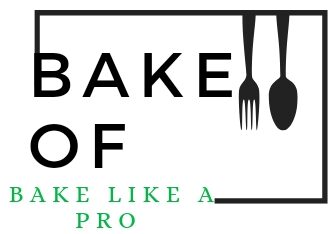Elevate your kitchen skills with our comprehensive guide on how to select the best knife sharpener. Master the art of precision sharpening.
Introduction
A well-sharpened knife isn’t just a tool; But how do you select the best knife sharpener? It’s the cornerstone of culinary excellence. The precision and ease with which a sharp knife glides through ingredients can elevate your cooking from ordinary to extraordinary. But the journey to wielding a sharp knife begins with the art of selecting the right knife sharpener, an essential tool in every chef’s arsenal. This guide delves into the intricacies of knife sharpener selection, enlightening you on the nuances that contribute to culinary mastery.
Table of Contents
The Importance of a Sharp Knife
Before you know How to Select the Best Knife Sharpener, In the world of gastronomy, a sharp knife is an unsung hero that can make or break a culinary masterpiece. Its significance goes beyond mere convenience; it’s a reflection of expertise and an emblem of culinary finesse. A blade honed to perfection isn’t just a tool; it’s a catalyst for creativity and precision.
Imagine the blade effortlessly gliding through a succulent cut of meat, effortlessly separating fibers without compromising the integrity of the dish. A sharp knife achieves this with surgical precision, ensuring each slice is a testament to craftsmanship. When it comes to ingredients like delicate herbs or intricate filleting, a keen edge becomes indispensable, unveiling layers of flavor and enhancing textures.
Investing time in learning how to select the best knife sharpener becomes a gateway to culinary excellence. The crispness of each cut, the reduction of wastage, and the seamless execution of techniques are all indebted to the keenness of the blade. A sharp knife isn’t just an asset; it’s the embodiment of culinary prowess, empowering chefs and home cooks alike to transform ingredients into works of art.
The Role of a Quality Knife Sharpener
A quality knife sharpener is the guardian of your culinary pursuits. It’s the tool that revives dull blades, rejuvenates your kitchen’s efficiency, and unlocks your potential as a chef. Understanding its role in your culinary journey is fundamental to selecting the best knife sharpener for your needs.
Understanding Different Types of Knife Sharpeners
In the realm of cutlery finesse, the journey to culinary excellence begins with a blade’s edge – and that’s where knife sharpeners step onto the stage. These precision instruments come in various forms, each designed to cater to distinct preferences and sharpening needs. From the traditional to the technologically advanced, understanding the diverse landscape of knife sharpeners is paramount on the path to enhancing your culinary prowess.
Manual Knife Sharpeners offer a hands-on approach, where tactile mastery meets blade precision. Among these, honing rods take center stage, gently realigning edges, while pull-through sharpeners simplify the process with preset angles, making them ideal for beginners.
On the other hand, electric knife sharpeners bring modernity to sharpening, employing abrasive wheels to automate the process with precise accuracy. For those who seek a more contemplative experience, whetstones and sharpening stones provide the means for a customized, artisanal touch that caters to specific blade requirements.
Understanding the different types of knife sharpeners is a crucial step in honing your kitchen skills. With a myriad of options available, delving into the nuances of each type equips you with the knowledge needed to make an informed decision on how to select the best knife sharpener tailored to your culinary journey.
Manual Knife Sharpeners:
These versatile devices cater to both novices and professionals. Among them, honing rods and pull-through sharpeners stand out. Honing rods realign the blade’s edge, maintaining sharpness, while pull-through sharpeners offer convenience through pre-set angles.
Honing Rods:
A honing rod, or honing steel, is your go-to tool for daily maintenance. With controlled swipes, it gently straightens the blade’s edge, ensuring peak performance before each use.
Pull-Through Sharpeners:
Ideal for those seeking efficiency, pull-through sharpeners simplify the sharpening process. Designed with preset angles, they guide the knife through stages of coarse and fine sharpening.
Electric Knife Sharpeners:
A modern marvel, electric sharpeners offer automated precision. They’re equipped with abrasive wheels that grind and polish blades, making them suitable for busy kitchens and individuals with limited sharpening experience.
Whetstones and Sharpening Stones:
For purists and enthusiasts, whetstones provide a meditative approach to sharpening. With varying grit levels, they offer a customized sharpening experience that hones blade edges to perfection.
Key Factors to Consider When Choosing How to Select the Best Knife Sharpener
Knife Types and Blade Material:
Different knives demand distinct sharpening methods. From the versatile chef’s knife to the precise paring knife, each blade type requires specific attention. Similarly, blade materials such as stainless steel, carbon steel, and ceramic dictate the sharpening process.
Sharpening Angle and Adjustability:
The angle at which a blade meets the sharpening surface greatly influences its sharpness and durability. Consider a sharpener with adjustable angles to accommodate various knives.
Grit Levels and Coarseness:
Grit defines the sharpener’s abrasive texture. Lower grits are coarser, ideal for reprofiling damaged blades, while higher grits provide a polished edge. Choose based on your knives‘ condition and desired sharpness.
Abrasives:
Diamond, Ceramic, Tungsten, etc.: The sharpening element matters. Diamond-coated sharpeners excel at aggressive sharpening, while ceramic and tungsten options provide finer finishes.
Safety Features and Ergonomics:
A safe sharpening experience is paramount. Look for features like non-slip bases and finger guards. Ergonomic design ensures comfortable usage during extended sharpening sessions.
Comparing Popular Knife Sharpener Brands and Models
Brand A: Explore the features that make Brand A stand out. Delve into the pros, cons, and the unique selling points that set it apart in the competitive world of knife sharpening.
Brand B: Uncover the innovation behind Brand B. Discover how its features enhance the sharpening experience, and weigh its pros and cons to make an informed decision.
Brand C: Dive into the offerings of Brand C. Evaluate its standout features, consider the benefits it offers, and weigh them against any potential drawbacks.
Step-by-Step Guide How to Select the Best Knife Sharpener
Assessing Your Knife Collection and Needs:
Begin by evaluating your knives’ diversity, condition, and intended use. This foundation will guide your sharpener selection.
Researching and Reading Reviews:
Tap into online resources and user reviews. Discover real-world experiences to refine your options and gain insights into each sharpener’s performance.
Understanding the Sharpening Process:
Acquaint yourself with the nuances of blade sharpening. Learn about sharpening stages, angles, and techniques that contribute to razor-sharp edges.
Narrowing Down Your Options:
Based on your research, eliminate options that don’t align with your needs. Prioritize features that resonate with your culinary style and sharpening preferences.
In-Person Testing (if possible):
Whenever feasible, experience the sharpener firsthand. Gauge its ease of use, precision, and compatibility with your knives.
Making the Final Decision:
Consider your assessment, research, and practical experience. Select the sharpener that harmonizes with your cooking ambitions and aesthetic preferences.
Maintenance and Care for Your Chosen Knife Sharpener
Cleaning and Storage:
A well-maintained sharpener ensures consistent results. Learn how to clean residual metal shavings, oils, and debris. Store it in a safe, dry place to extend its lifespan.
Incorporate regular maintenance into your culinary routine. A routine touch-up keeps both your sharpener and knives in optimal condition.
Replacing Parts and Sharpening Elements:
As your sharpener ages, its components might require replacement. Understand how to swap worn parts and ensure your sharpener’s continued efficacy.

Conclusion
In the realm where precision meets culinary artistry, the journey towards mastering the art of sharpening finds its crescendo. Your commitment to the craft is reflected in the seamless strokes of a well-sharpened blade, a testament to your dedication to perfection.
As we draw the curtain on this exploration into the world of sharpening, remember that selecting the ideal knife sharpener is a pivotal step. It’s the difference between an ordinary slice and a symphony of flavors. Armed with insights on how to select the best knife sharpener, you’re poised to embark on a journey that transforms the mundane into the extraordinary.
With every meticulous cut, every finely honed edge, you inch closer to becoming a true maestro of the culinary realm. Let your kitchen resonate with the clinking of precision, the whisper of perfected technique, and the symphony of a well-sharpened blade. Your culinary prowess is now backed by the wisdom of sharpening – an art that turns every meal into a masterpiece.









